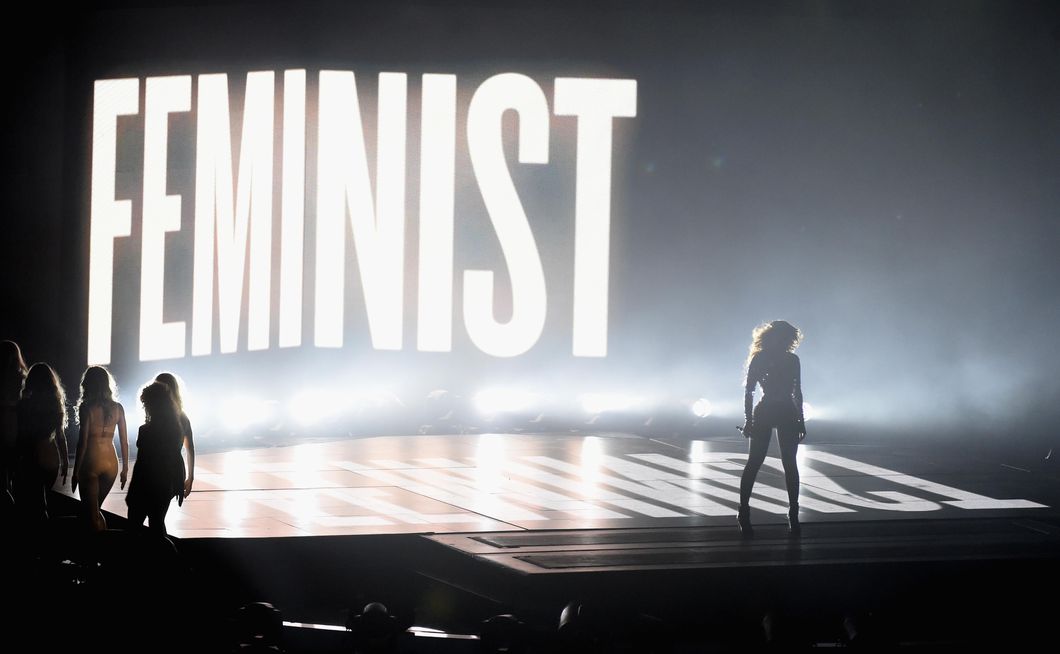In the last article I wrote, I said I was in this class called The Quest II, which is a very intriguing class with many different topics being covered through strenuous readings spanning from the 1600s all the way into today's time. This past week, we read the first chapter titled 'The Problem That Has No Name' in The Feminine Mystique by Betty Friedan. I have never been exposed to writings like these before this class, and I am so grateful for the opportunity to become more educated now. I have been unable to stop thinking about what that chapter contained. Basically, it was a chapter about what was dubbed as the problem with no name, and in the 1950s and 60s, women all around the world suffered from it. The main idea was "we can no longer ignore that voice within women that says: 'I want something more than my husband and my children and my home.'" In class, while analyzing the writing, my teacher said that there have been four waves of feminism, which took me by surprise. To me, feminism was always this big idea and battle that everyone is arguing about, but I never really heard details. It was a topic that was usually skimmed over and summarized with a few sentences in the history lessons. I was intrigued by this, so after reading and analyzing this chapter, it led me to do some research of my own.
The first wave of feminism began in 1848 and ended in 1920. In this wave, women were starting to demand the right to 'own' themselves and gain the right to vote. The beginning of this movement was not referring to the first people to ever think that women are human beings and should maybe have more freedom than they do. It was referring to the first political action that was taken with the women's suffrage movement. This movement was not pretty and should not be able to be summarized in just a few sentences while being taught to kids across the country. This movement was often a brutal one, where women faced arrest for marching, lecturing, and protesting as they fought hard for the right to vote. Most say that this wave began with the Seneca Falls convention of 1848 where a large group of women gathered to discuss "the social, civil, religious conditions and rights of women." Many famous names came about from this wave, including Sojourner Truth, Elizabeth Cady Stanton, and Susan B. Anthony. This movement ended with the passing of the 19th Amendment, which finally gave women the right to vote.
The second wave of feminism began in 1963 and went until the 1980s. This is the wave that began with the Betty Friedan book The Feminine Mystique. This movement focused on despite the fact that, legally, women were allowed the freedom to do anything men could do, it was unheard of because of the society that was created to make it known that women were supposed to stay at the home to watch the kids and take care of the house. The first wave had focused on legal rights that women should be granted with, but this wave added a new focus in as well: societal changes that needed to be made. The book gave housewives permission to be angry. They were finally reading something that helped explain the feeling that was in the pit of their stomachs and could not be shaken. Doctors' advice to housewives was to take a few days to themselves, get some leisure time in between running the kids around and constantly keeping the house spick and span. It was almost comical how doctors explained that women were feeling this way because they received an education, and that's what made them realize that there might be something bigger than being a housewife forever. In the book, there are a number of different perspectives that Friedan included. One that stuck out to me was, "A girl refused a science fellowship at John Hopkins to take a job in a real estate office. All she wanted, she said, was what every other American girl wanted—to get married, have four children and live in a nice house in a nice suburb." It is incredible to see that was how women thought back then, especially because so many girls I know, myself included, have such high goals and will do everything they can in order to achieve them. Another thing that stuck out to me from the book was the fact that one woman said doctors prescribed tranquilizers, and women took them because "the pain of knowing there was no point to life was too much." It is mind boggling to think that women were so hopeless that they turned to tranquilizers to make them not feel it. The book gave women hope and relief that there were others that felt the same way.
The third and fourth wave of feminism, which is often just combined, began in the 1990s and continues on to this day, was focused the role of femininity in society. Early third wave activists were focused on sexual harassment in the workplace and working to increase the number of women in positions of power. The belief was born that rejection of embracing being a girl was misogynistic itself and that girls should want to be themselves, but not have to deal with the pressures of what being a woman was like in society. A lot of more recent feminist movements have been the #MeToo movement that picked up traction online and blew up. The fourth wave has more of an online presence with the new social media apps of Instagram, Facebook, and Twitter.
The history of feminism has had its ups and downs, but I enjoyed researching more and becoming more educated on the topic. The first chapter of Betty Friedan's The Feminine Mystique is also a must read for people who actually find the topic interesting.











